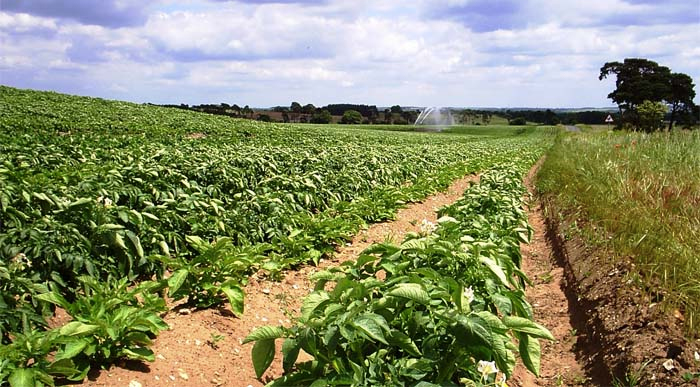
Global demands for energy and food have been relentless with an increasing global population, and the need to find alternative ways to produce and capture energy to meet these demands continues.
This was the subject of the key address at the recent Hutchinsons agronomist conference where BBC presenter, Tom Heap, chaired a session looking at land use in relation to food and fuel production. Asking the question of the audience “Should more land be given over to the production of fuel rather than food?” Tom invited four experts to present their opinion, each drawing on their field of experience and knowledge to support their argument.
CEO of the Renewable Energy Association, Dr Nina Skorpuska, reviewed the status of the UK Renewable Energy Action Plan, which sets out how the Government plans to meet its 15% share of the overall EU target of 20% of total energy from renewables by 2020.
Although progress is being made (the UK is at 5.2% towards 15% target), Nina Skorpuska indicated it will require considerable drive and commitment to hit the 2020 target, especially as the interim assessments show a lag which will be difficult to make up.
She pointed out that to fulfil that commitment there will need to be increases in all forms of renewable technologies deployed to generate energy, including the use of land to grow crops that are destined for fuel use – food and fuel - not food versus fuel.
“We cannot continue to use fossil fuels as we currently do – this will promote further climate change and global warming – otherwise we shall exceed the 2°C ceiling that scientists indicate is a much as we can allow the world to warm.”
Will Dawson, of Forum for the Future, stated that land can be used for food and fuel and both uses can support each other if energy schemes are planned smartly.
He highlighted the Farm Power consortium’s findings that at least 10GW of renewable power could be installed on UK farms in this way.
Mr Dawson gave the examples of solar PV installed within arable crops and used to enhance biodiversity and crop pollination, whilst restoring flower meadows. Additionally wind and solar can also be installed within livestock enterprises with grass grown for grazing between the banks of panels – allowing for dual use of the land. He also promoted the use of anaerobic digestion for the conversion of slurry into energy and digestate for field fertilisation.
David Young OBE, representing the TGE Group, took a very practical view gained from the experience of installations of solar PV, ground source heat pumps and biomass boilers on several farms and other industrial units.
“Produce the energy locally and use it where you have harnessed it,” he advised.
“There are huge areas of roof space on farm and on industrial units where solar PV can be installed, without using any land. Even with today’s lower generation tariffs (currently 10.34p/kWh vs 2011 @ 32.9p/kWh for a 100KWp system), the newer, and cheaper and yet more efficient technology can allow systems to cover their cost of installation within 6 years.”If necessary land could be used for solar PV – but take out unproductive land on the farm first so fertile land is preserved he advised. For biomass boilers the fuel source could be from better managed woodland already existing on the farm, with coppicing and planting to replace trees and delivering environmental benefits. Ground source heat pumps have very low impact and can even be run through lakes as the energy source.
Dr David Styles, of Bangor University, applied scientific analysis and measurement to the differing technologies, indicating where the greatest savings in greenhouse gas emissions would be delivered and also which would represent the most efficient use of land.
“All these technologies are able to deliver useful forms of energy, but some are significantly more efficient than others. Wind turbines occupy the smallest area of land per unit of energy generated, and solar PV installed on buildings or even in fields appears to be very efficient.”
“However, strategic use of crops for biofuel can be advantageous to the farm and the environment.
Placing willow for coppicing adjacent to watercourses to provide a buffer that protects water from fertiliser runoff and soil erosion delivers dual benefits. A combination of the various options could deliver maximum benefit – establish the appropriate energy crop or mechanical technology in the right place to deliver our energy needs.”
Summing up, chairman Tom Heap, reminded the audience that growing food for fuel is not a new idea – in the past two centuries when land was tilled by horse-drawn implements over 30% of that land grew crops to “fuel the horses”. The demands of the world have changed significantly since those times, but with inventiveness and technological advances there will be many new and more effective ways that energy can be harnessed with much less impact on the world in which we live.
